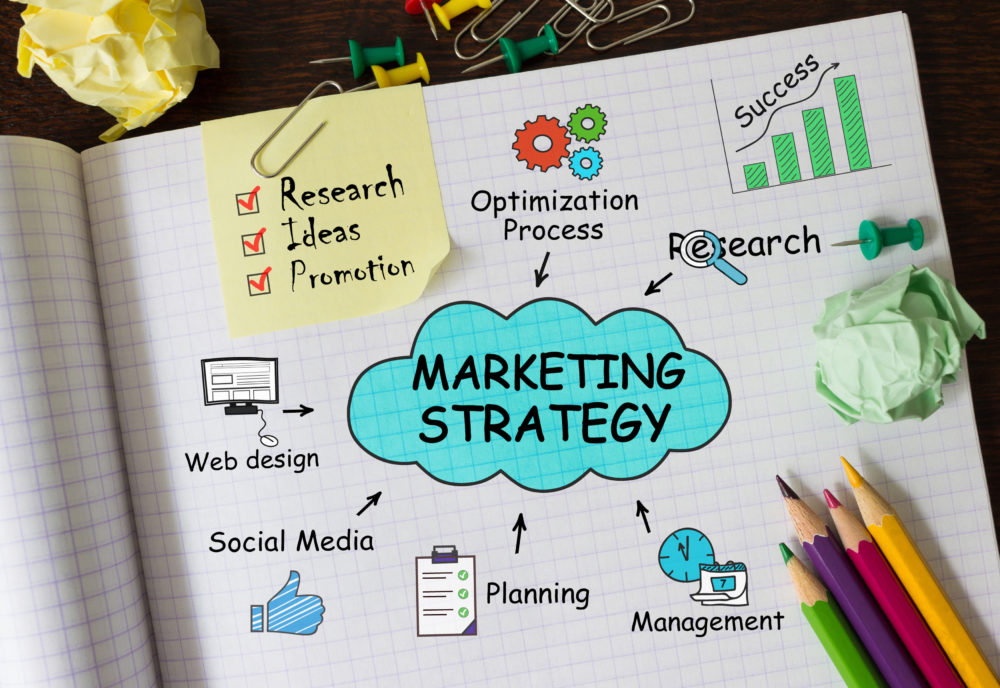10 Strategy Tools For Smaller Businesses

I come from a background in large blue chip businesses, where I spent a fair amount of time helping predominantly large clients with strategic issues and during the last ten years I’ve started and built a couple of smaller businesses. SME owners and directors need to think about strategy, but they need to concentrate upon those elements that are going to produce the most impact – by all means read the business strategy tomes from cover to cover if you want, but this article aims to give you, a busy SME director, most of what you need to know about strategy and analysis in order to make a start.
1 – 3 Types of Excellence. Many commentators would agree that a company has the option to excel (that means really excel so that the market recognises that excellence) in one or two of three possible areas:
Operational excellence – which means doing things really efficiently and therefore probably being able to deal with higher volumes and therefore passing on cost savings to customers (although it is possible to think of examples where operational excellence was so valued by the customer that she would be prepared to pay a premium for it alone). An example might be EasyJet.
Customer intimacy – which means that you have systems and staff who treat customers as royalty (or at least good friends) and they feel loved and valued by your business. An example might be John Lewis.
Product leadership – which means that your product (or service) is highly differentiated from alternatives and substitutes in ways that customers value. An example might be Apple.
2 – Do a McKinsey. As a start-up or small business you may not be able to afford a McKinsey assignment to address your strategy issues, but you can apply one of their most powerful weapons to your advantage. MECE stands for “mutually exclusive, collectively exhaustive” – apply it to your problems and you could see great results. MECE is a useful model for analysing a business problem because it aids clear thinking by ensuring that categories of information do not overlap, and by reducing the possibility of overlooking information by requiring that all of the categories of information taken together should deal with all possible options. Information should be grouped into categories so that each category is separate and distinct without any overlap (mutually exclusive), and all of the categories taken together should deal with all possible options (collectively exhaustive). A “major issues list” should contain no less than two, and no more than five issues, with three being the ideal number. Let’s say that Acme Widgets Ltd use a MECE tree diagram to help them locate the source of declining profitability. The diagram as a whole represents the problem at hand; each branch stemming from the starting node of the tree represents a major issue that needs to be considered; each branch stemming from one of these major issues represents a sub-issue that needs to be considered; and so on. The problem to be addressed in this case is “how can Acme Widget Ltd increase widget sales?”.
You will hopefully find that analysing issues down to the constituent parts using this technique will clarify where the real issues lie and they will now be in more “bite sized chunks” and so be easier to handle.
3 – Markets & Industries. The expressions “What’s your market?” and “What industry are you in?” are thrown around pretty well interchangeably – what exactly do we mean when we say “market” and “industry”. If you use the definitions that I suggest then a great deal more clarity will start to appear around the potential strategy that you should adopt.
I suggest that market should mean – a group of people / organisations who have the desire & ability to buy products to satisfy a certain need or want ie buyers & their needs. Market therefore is not about your product or service (although of course related). I suggest that you spend a reasonable amount of time thinking about who the buyers of your products or services are / could be and what traits or characteristics they share. By being able to describe your market(s) accurately and precisely you will subsequently be able to focus your sales and marketing efforts far more effectively.
When thinking about markets (ie buyers) you should also consider:
* How attractive are your products and services to these buyers
* And how attractive is the market to you – is it clearly defined, growing, shrinking, are external influences going to affect its size in future, are they easy or difficult to persuade to buy, and so on.
I’d suggest that industry should mean – sellers that offer products or services that are similar or substitutes. Sellers sell into markets. So let’s say that you have founded a business offering disposable paper place mats for university canteens where businesses can advertise themselves to students. The classic Dragons Den question is “so what competitors do you have?”. Of course you would be wrong to say “none – we are the only people doing these advertising place-mats”. Rather you need to think about what industry you are in, and the answer is likely to be “the provision of advertising to target students” industry so your competitors would include – Facebook, local radio, advertising hoardings, Google Ads, free magazines etc. The key thing when defining your industry is similar or substitute offerings – you may think that you are unique but if your potential customers consider something else then that something else is in the same industry as you!
When thinking about industry (ie other sellers you should also consider:
* Can you sustain any advantage (indeed do you have any advantage?)
* How attractive is your industry (more on this below)
4 – Attractiveness of an Industry. Of course different industries have different levels of attractiveness and you should be aware of that right at the outset. But it isn’t necessarily the case that you should only operate in attractive industries and disregard unattractive industries. Good business can be created in “unattractive industries” and it is perfectly possible to fail within what would be viewed as an attractive industry. The analysis that you perform to establish that an industry is “attractive” can be carried out by the rest of the business world too, so others might stampede into the industry and change its attractiveness quite quickly. Industry analysis doesn’t ensure that you have picked a winner, it just means that you are well informed about your business environment.
The defining work on industry analysis was carried out by Professor Michael Porter of Harvard Business School and published in his 1979 book “Competitive Strategy” – Porter’s Five Forces.
Porter’s Five Forces
Competition: How strong is the rivalry posed by the present competition? The various factors, include: the number of firms in the industry, rate of market growth, economies of scale, customer switching costs, levels of product differentiation, diversity of competition, level of exit barriers.
Barriers to entry: What is the threat posed by new players entering the market? The various factors include: capital costs of setting up,highly specialised equipment, level of protection of necessary intellectual property, scale and branding of existing competitors, government regulations.
Substitutes: What is the threat posed by substitute products and services? The various factors include: the cost to customers of switching to a substitute, buyer propensity to substitute; relative price-performance of substitutes, product differentiation.
Supplier bargaining power: How much bargaining power do suppliers have? The various factors include: number of possible suppliers and the strength of competition between them, whether suppliers produce differentiated products, importance of sales volume to the supplier, cost to the buyer of changing suppliers, vertical integration of the supplier or threat to become vertically integrated (ie the degree to which a firm owns its upstream suppliers and its downstream buyers).
Customer bargaining power: How much bargaining power do customers have? Factors that will effect the bargaining power of a customer include: volume of goods or services purchased, number of other customers, brand name strength, product differentiation, availability of substitutes.
5 – Spider diagram. Understanding how your business compares to the competition and to customers perceptions of value is a really key element of strategy. A great way to form a better understanding is to establish the key important dimensions (by asking the people who matter, customers) and then representing them graphically using a “spider diagram” such as below. You can map how your business measures up and how the competition measure up and then it will be readily apparent where areas of competitive advantage / disadvantage lie.
6 – SWOT. Dear old SWOT (strengths, weaknesses, opportunities, threats) – it hardly needs any introduction
Strengths weaknesses opportunities threats
After a business clearly identifies an objective that it wants to achieve, SWOT analysis involves examining the strengths and weaknesses of the business (internal factors); and considering the opportunities presented and threats posed by business conditions, for example, the strength of the competition (external factors).
Don’t fall into the trap of SWOT becoming two lists – one of “pros” and the other of “cons” and make sure that you use it critically and with clear prioritisation. So for example, weak opportunities shouldn’t balance strong threats.
7 – The Sales Funnel. Strictly speaking this isn’t a pure strategy tool but a very powerful sales strategy analytical tool nonetheless.
If your problem is with generating interest and awareness, then look at your PR – where are your target market seeing you talking about what you do? Are you engaging with your target market? If your problem is with generating leads, then how well are you explaining how you meet your target market’s needs with your products or services? If your problem is with converting leads into serious buyers, how well are you encouraging your buyers to take action? How well are you demonstrating your credibility and expertise to solve their problems? If your problem is with closing the sale, what objections are you hearing from your potential buyers? How are you overcoming these objections?
8 – The 4 P’s. Again the purist might argue that this is marketing strategy rather than pure business strategy – but we don’t mind what you call it because it all helps to being a more successful business. There isn’t the space here to do justice to the 4 P’s of marketing but to skim the surface they are a framework for evaluating the marketing strategy for a product.
Price: the pricing strategy employed by a firm for a particular good or service will have a significant effect on profit.
Product: differentiation is a source of competitive advantage. Product differentiation creates value in the mind of the consumer.
Position / Place: the physical location of a good or service can be a source of competitive advantage.
Promotion: is used to enhance the perception of a good or service in the minds of customers. A promotion will draw peoples attention to any features of a product that they might find attractive.
9 – Strategic Advantage. Following on from his work which resulted in the “Five Forces”, Michael Porter suggested that businesses can adopt one of four generic business strategies, as represented in the diagram below.
Generic strategies
The differentiation and cost leadership strategies seek competitive advantage in a broad range of market or industry segments. By contrast, the differentiation focus and cost focus strategies are adopted in a narrow market or industry.
I will write about this more fully in a strategy for smaller businesses booklet soon to be published, but for now it might be best just to suggest some example companies that might fit into each quadrant:
Cost Leadership: Tesco
Differentiation: Mercedes Benz
Cost Focus: Instore
Differentiation focus: The Perfume Store
Generic Strategies Example Companies
10 – Product & Service Life Cycle. The product lifecycle curve was originally the brainchild of another great management thinker, Theodore Levitt and was first published in the Harvard Business Review in 1965. Again space here does not allow for a full description.
Product Life Cycle Curve
Introduction: As a new product much time will be spent by the organisation to create awareness of it’s presence amongst its target market. Profits are negative or low.
Growth: If consumer clearly feel that this product will benefit them in some ways and they accept it, the organisation will see a period of rapid sales growth.
Maturity: Rapid sales growth cannot last forever. Sales slow down as the product sales reach peak as it has been accepted by most buyers.
Decline: Sales and profits start to decline, the organisation may try to change their pricing strategy to stimulate growth, however the product will either have to be modified, or replaced within the market.








